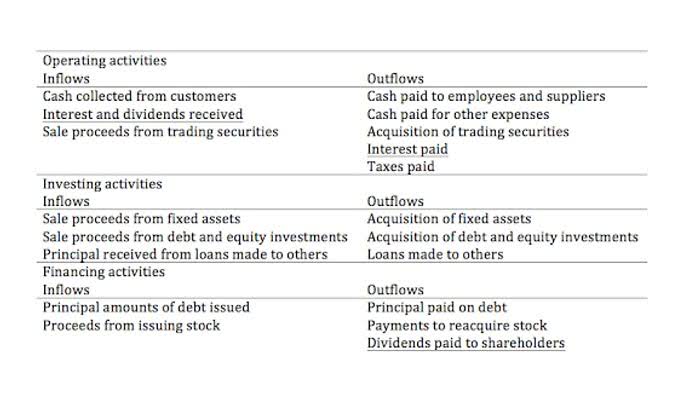
In a highly regulated industry such as healthcare, compliance violations can be incredibly damaging. Not only does noncompliance lead to fines, sanctions, and accreditation issues, it also does lasting damage to an organization’s reputation and brand. Automating accounts receivable processes is the surest way to avoid compliance errors involving data privacy, invoicing practices, accounting fraud, and other key areas of concern. Patients need to know that their healthcare provider can be trusted not only with their health, but also their payments and privacy.
- However, a lot of providers only send out bills once monthly, and this alone can generate delays with accounts receivable.
- According to 90% of chief financial officers, claim denials are a critical concern for revenue cycle management (RCM) teams.
- We’ll also highlight how Advance RCM, a leading medical billing company, can help streamline your AR processes and improve financial outcomes for long-term success.
- This money can come from patients, insurance companies, or government programs like Medicare and Medicaid.
Accounts Receivable Aging Report: SMBs Guide to Achieving Cash Excellence

Our approach brings together leading-edge technology, process innovation, clinical intelligence and analytics to improve financial performance. Working with a trusted partner for your RCM needs makes it possible to achieve superior results. We bring scale, breadth and depth of solutions and expertise to improve financial performance, decrease administrative costs and unlock new sources of growth. If that answer is anything but a confident YES, then chances are your facility is leaving money on the table. The most important from a financial perspective in that tracking is cash receipts.
- Healthcare organizations can set up an automated eligibility system with which they can accurately validate the insurance details of their patients.
- An A/R Aging Report is more than just a financial document—it’s a critical tool for managing the health of your revenue cycle in medical billing.
- By categorizing accounts based on the time frame of payment, healthcare organizations can prioritize follow-up efforts and take necessary actions to collect outstanding balances.
- This confluence of events has brought a meteoric rise in managed services and created an environment rife with options for strategic A/R partnerships.
- Get in touch with Synergy HCLS today to know more about our AR solutions and services.
What is the typical timeframe for AR to age before it becomes problematic?
The systems and procedures in place suggest their contractual allowances and reserves are sufficient, but the data shows the numbers can’t be justified. Contact us to take control of your revenue cycle using these proven strategies. The decision to strategically offload A/R is multifaceted and requires careful planning and execution. Billing https://www.bookstime.com/articles/procurement-automation challenges, recovery rates and partnership options will vary based on this simple division of accounts.

Educate Patients on Responsibilities and Follow-Up
An automated AR system allows accounts receivable officers to keep track of payments and track bills as they near their due date. This enables AR offices to send out reminders, when necessary, and stay on top of customers who are becoming potential credit risks. Creating consistent, clear communications is the surest way to keep your AR department running smoothly and ensure that money’s coming in. Sending out payment reminders, post-due notices, formal dunning letters, and legal notices is a vital function of your AR team. Maintaining the appropriate language and tone in each of these communications can make a major difference in receiving payments on time. Managing accounts receivable in U.S. healthcare requires constant https://agenziacalliope.it/what-is-a-sales-invoice-a-complete-guide-for-small/ awareness of the constantly changing regulatory compliance landscape.
Hospitals can receive their payments faster if they effectively manage their accounts accounts receivable in healthcare receivable. Insurance companies pay healthcare organizations based on the invoices generated for their patients. So, you should create accurate invoices so that they are not sent back for correction. This practice saves you from payment delays as the accounts receivable days are less. Delayed reimbursements from insurance companies and patients can lead to significant cash flow problems. The time lag between providing services and receiving payments can strain the financial resources of healthcare providers.

They play an integral role in revenue cycle management (RCM)Medical Billing by directly affecting the healthcare organization’s sustainability and financial health. Outsource AR tasks to a trusted medical billing company like Advance RCM to access specialized expertise and resources. This allows your in-house team to focus on patient care and core operations, increasing efficiency and reducing administrative burdens. Use digital tools for patient intake and verification to capture accurate data from the start.
- And as you can probably guess, patients are not very reliable when it comes to paying large out-of-pocket medical expenses.
- Accounts receivable (A/R) in healthcare refers to the money owed to medical providers by patients or insurance companies.
- His academic grounding in Economics fuels his prowess in navigating the intricacies of the healthcare landscape.
- There you’ll find more information on benchmarks, and questions to ask a billing department.
- Prabu’s expertise spans across Accounts Receivable and Project Management, making him a vital leader in driving operational efficiency and delivering impactful results.
Compliance and Regulatory Issues
- Healthcare organizations track and manage their AR to ensure timely payment from patients and insurance companies.
- This transparency not only demystifies the financial aspects of healthcare for patients but also sets clear expectations, potentially reducing billing disputes and encouraging timely payments.
- AR can be a significant financial burden for healthcare providers, as it can tie up cash that could otherwise be used to pay for operating expenses or invest in growth.
- A strong business is built on an excellent customer experience—one that’s as transparent and supportive as possible.
- Healthcare providers often encounter claim denials or rejections due to coding errors, incomplete documentation, or non-compliance with insurance guidelines.
With enough capital, you can easily analyze your capabilities to improve performance. The other measure is the percent of accounts receivable in each “aging bucket”, for instance, 0-30 days, days, days, etc. To calculate it, you will need a report showing the dollar amount of the AR in each aging bucket. The graph below shows the contrast between Better-performing billing departments vs. Average-performing billing departments.

Using Technology To Manage AR – There are a number of software programs that can help healthcare providers to manage AR. These programs can help to track patient payments, generate reports, and automate follow-up procedures. Accounts receivable (AR) is the amount of money that a healthcare provider is owed by patients for services that have already been rendered. AR can be a significant financial burden for healthcare providers, as it can tie up cash that could otherwise be used to pay for operating expenses or invest in growth.

